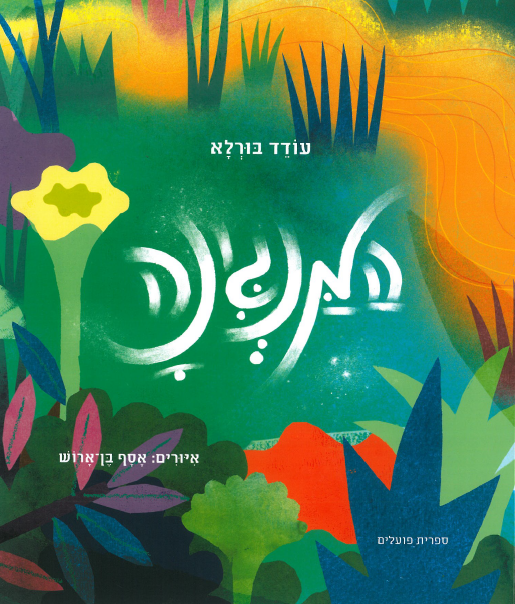Мелодия
Дорогие родители!
Героиня нашего рассказа, Мелодия, задает себе вопрос: «Какой от меня толк, если никто не обращает на меня внимания? Никто меня не слышит и не хвалит!». Мелодия отправляется в путь. По дороге она встречает животных и растения и спрашивает всех, нужна ли она им. После одного отказа за другим Мелодия, без спроса, проникает в любящее сердце матери, превращаясь в колыбельную для ее малышки.
Мелодия в наших сердцах
Всем нам, взрослым и детям, знакомо чувство, которое испытывает Мелодия. Все мы задаемся подобными вопросами: «Если меня никто не видит и не слышит, кто я вообще такой?» Достаточно одного человека, который обратил бы на нас внимание, проявил бы к нам симпатию, чтобы вернуть нам уверенность в себе и жизнерадостность.
Мелодия ищет свое предназначение и находит его, помогая установить удивительную связь между родителем и ребенком. К столетнему юбилею писателя Одеда Бурла, перед окончанием учебного года, мы рады подарить вам эту прекрасную книгу, призывающую родителей и детей вместе прислушаться к мелодиям, которые звучат в их сердцах.
Пижамная библиотечка желает вам веселых каникул!
Одед Бурла (1915-2009) израильский писатель, поэт, художник и иллюстратор. Родился в Иерусалиме в семье сефардов, 14 поколение в Эрец Исраэль. Отец Одеда, Иегуда Бурла, тоже занимался литературой и удостоился многих премий. Одед посещал сельскохозяйственную школу «Микве Исраэль», продолжил обучение в академии искусств «Бецалель». Его первая книга увидела свет, когда писателю исполнилось 45 лет. С тех пор Одед Бурла успел написать и проиллюстрировать более 70 детских книг, в которых, по его собственному утверждению, изображено 346 разных животных! Бурла считают праотцом нонсенса в израильской детской литературе. Его книги пронизаны сложным юмором и удивительной игрой слов. За свое творчество писатель удостоился многих премий: премии имени Аарона Зеева за вклад в литературу, премии организации защиты творческих прав АКУМ и литературной премии Бялика.
Читаем и играем дома
*Как рисуют мелодию? Обратите внимание, как иллюстратор Асаф Бен-Арош изобразил Мелодию. Как меняется ее облик на протяжении книги. Предложите детям нарисовать вместе с вами вашу мелодию.
*Поют ли у вас дома колыбельные детям? Помните ли вы колыбельные, которые пели вам ваши родители? Напойте малышам любимую вами колыбельную песню. Возможно, вам захочется возобновить эту приятную традицию и вместе петь на ночь.
*Знакомы ли вам мелодии без слов? Их можно напевать вместе с малышами. А еще можно танцевать или писать вместе слова на эти мелодии.
*Одед Бурла написал и проиллюстрировал много детских книг, среди которых: серия «Улыбка в каждом уголке» и «Большая книга Одеда Бурла». Сходите вместе в городскую библиотеку или поищите его произведения в Интернете. Мы уверены, они вам понравятся.
*Сюжет книги довольно прост, по нему несложно поставить домашний спектакль. Привлеките к постановке малышей. Они могут играть роль Мелодии, а остальные домочадцы – растения и животных. Вы можете читать диалоги, в которых Мелодия объясняет разным существам, зачем она нужна им.
*Песни трав. Гора в нашей книге отказывается петь, потому что «горы не поют». А деревья отвечают Мелодии: «У нас уже есть своя песня». Рабби Нахман из Брацлава говорил: «У каждой травинки своя мелодия». Это значит, что у каждого существа на земле есть свой голос и своя песня. Этой теме посвящено стихотворение рабби «Песнь трав». Израильская поэтесса и композитор Наоми Шемер положила его на музыку. Обязательно послушайте эту песню. Подпевайте вместе!






